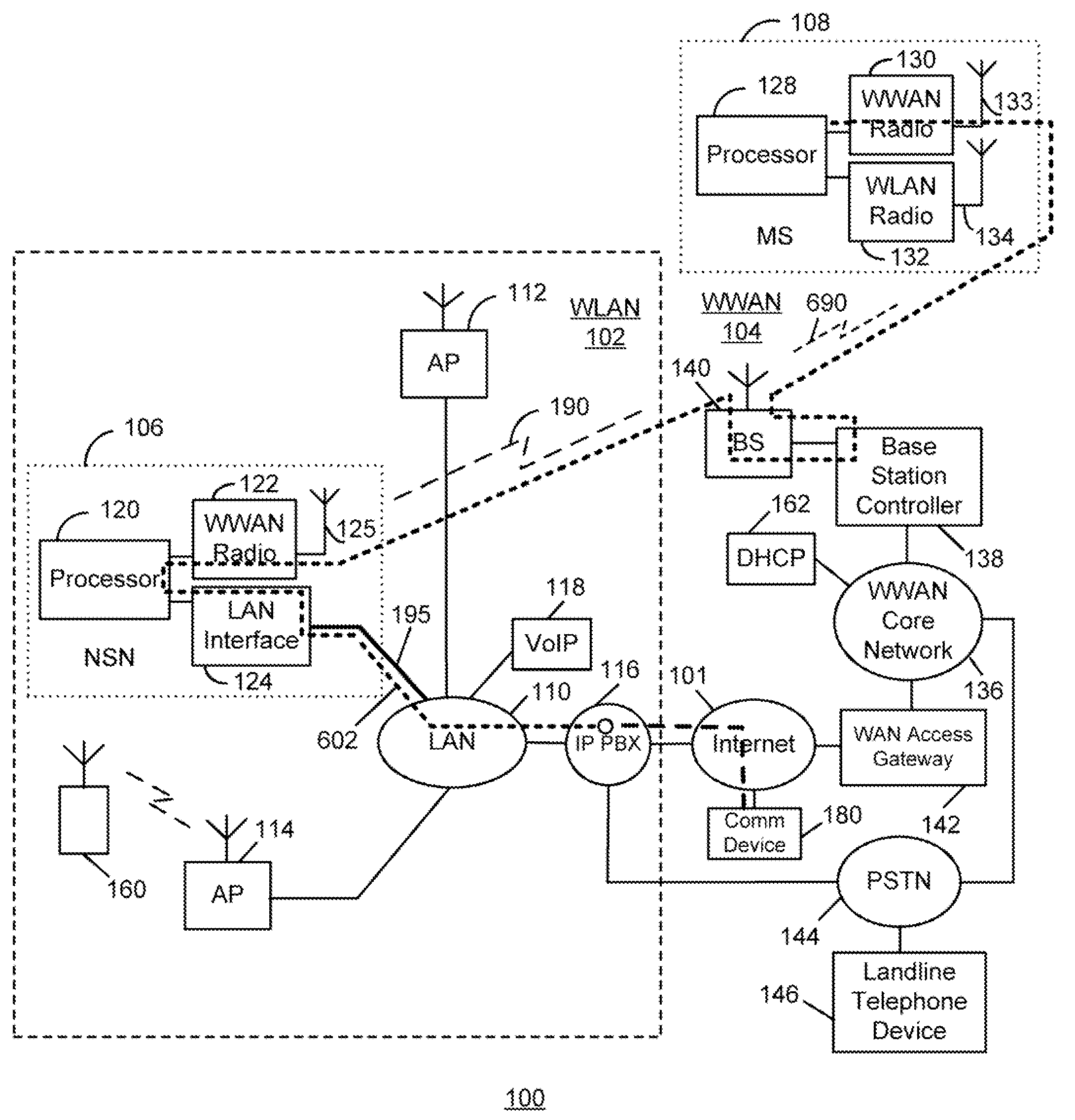WLAN-To-WWAN Handover Methods And Apparatus Using A WLAN Support Node Having A WWAN Interface
a technology of wlan and support node, applied in the field of handover methods and apparatus, can solve the problems of enterprise anchoring (ea) complex, enterprise anchoring normally incurs longer vho execution delay, and may be more difficult to achieve real-time handover
- Summary
- Abstract
- Description
- Claims
- Application Information
AI Technical Summary
Problems solved by technology
Method used
Image
Examples
Embodiment Construction
[0026]Methods and apparatus for use in switching communication operations between heterogeneous wireless networks, such as a wireless local area network (WLAN) (e.g. an IEEE 802.11-base network) and a wireless wide area network (WWAN) (e.g. a cellular telecommunications network), for a mobile communication device with use of a network support node are described herein. The network support node has a first communication interface (e.g. an Ethernet interface) for connection with a communication network which includes the WLAN, and a second communication interface (e.g. a cellular radio air interface) for communicating with a base station of the WWAN over a wireless communication link. In one illustrative scenario, the mobile device initially operates in the WLAN in a communication session with another communication device. During the session, the network support node receives an indication that the mobile device is transitioning from the WLAN to the WWAN. In response to receiving the ...
PUM
 Login to View More
Login to View More Abstract
Description
Claims
Application Information
 Login to View More
Login to View More - R&D
- Intellectual Property
- Life Sciences
- Materials
- Tech Scout
- Unparalleled Data Quality
- Higher Quality Content
- 60% Fewer Hallucinations
Browse by: Latest US Patents, China's latest patents, Technical Efficacy Thesaurus, Application Domain, Technology Topic, Popular Technical Reports.
© 2025 PatSnap. All rights reserved.Legal|Privacy policy|Modern Slavery Act Transparency Statement|Sitemap|About US| Contact US: help@patsnap.com



